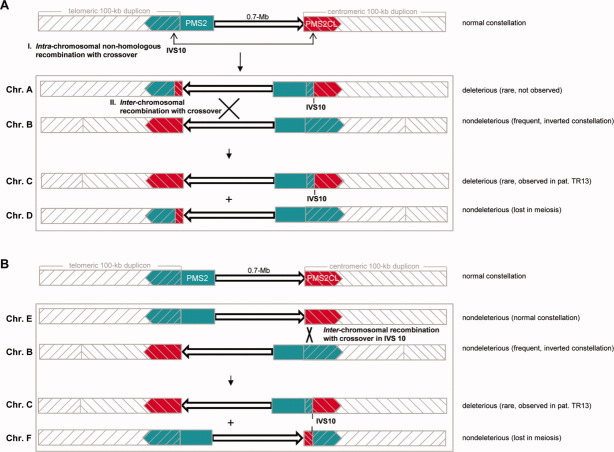Figure 4.
Possible mechanisms leading to the configuration found in patient TR13: a deleterious hybrid PMS2 allele with no reciprocal hybrid PMS2CL allele. The normal configuration depicted at the tops of panels A and B is that shown in Figure 3A (see legend of Fig. 3 for meaning of colors and symbols). (A) First hypothesis: Event I. Intrachromosomal recombination with crossover generates chromosome A (Chr.A) containing both the deleterious hybrid PMS2 allele and a reciprocal hybrid PMS2CL allele. The recombination breakpoint is located in intron 10 (IVS10). Event II (occurring simultaneously with or after Event I). Interchromosomal recombination with crossover (the breakpoint is in the 0.7-Mb interduplicon sequence) between Chr.A and Chr.B (characterized by a common inverted configuration that is nondeleterious) gives rise to the configuration observed in patient TR13 (Chr.C): the deleterious hybrid PMS2 allele and a normal PMS2CL allele. (B) Second hypothesis: interchromosomal recombination event between Chr.B (as described in panel A) and a chromosome with the normal configuration (Chr.E). With the recombination breakpoint located within intron 10, this sequence exchange generates the deleterious PMS2 hybrid allele found in patient TR13 (Chr.C). [Color figure can be viewed in the online issue, which is available at wileyonlinelibrary.com.]

